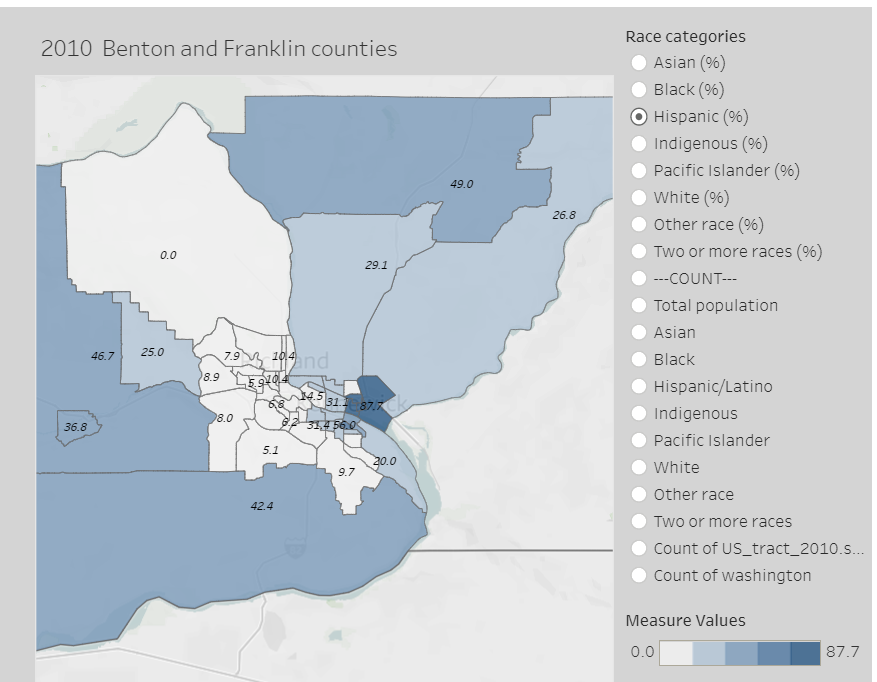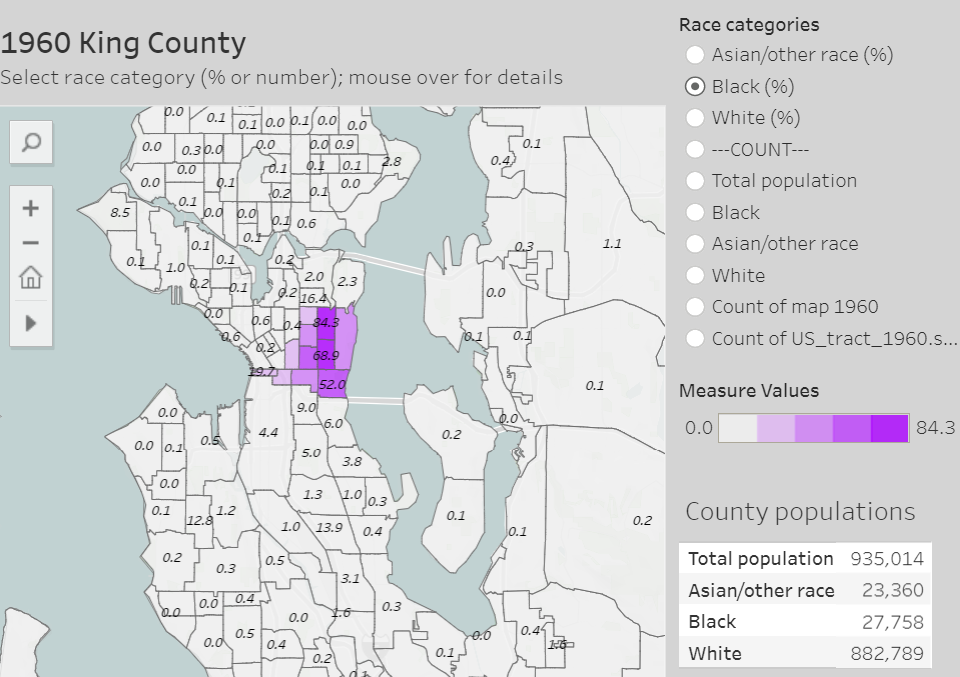Notes: Data are from the National Historic Geographic Information System (IPUMS). The most recent data is labeled 2020* but to improve accuracy we use an average of five Census Bureau American Community Survey (ACS) samples from 2018-2022.
Race categories and census tracts: The Census Bureau adds and adjusts the boundaries of census tracts nearly every decade. It also changes the data it reports and the racial categories.
Credits: These maps and tables were created by Anna Yoon, Brian Lam, Gihoon Du, Jiang Wu, and Yurika Harada using data and shape files from the National Historical Geographic Information System (NHGIS). The work was a class project for Geography 469 GIS Workshop taught by Professor Sarah Elwood-Faustino Spring 2017. James Gregory added the 2020 maps.
Source: calculated from Steven Manson, Jonathan Schroeder, David Van Riper, and Steven Ruggles. IPUMS National Historical Geographic Information System: Version 12.0 [Database]. Minneapolis: University of Minnesota. 2017. http://doi.org/10.18128/D050.V12.0
See these maps of race and segregation for other Washington counties.
|
|
|
 |
 |
 |
 |